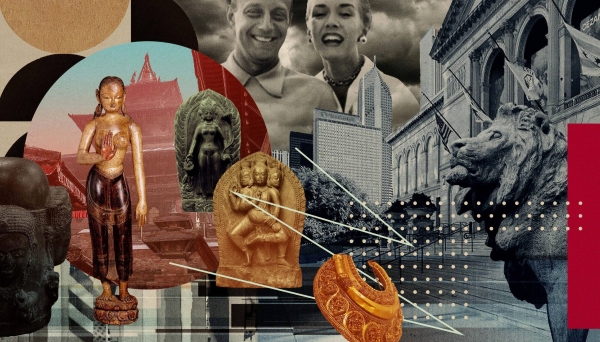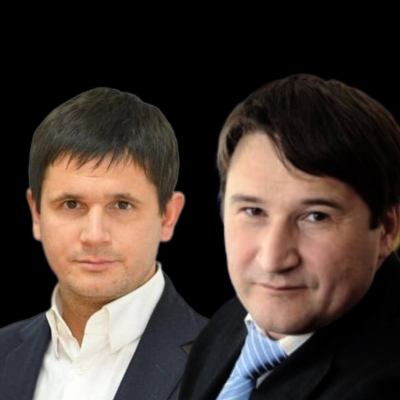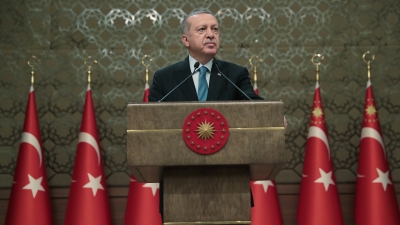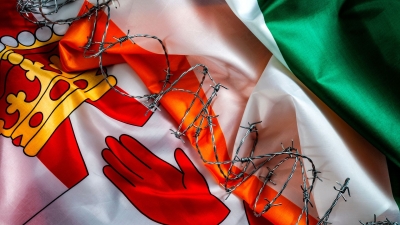Eying a rare collection of Asian artifacts, the Art Institute of Chicago turned on the charm to woo a local benefactor.
It arranged a major exhibit to showcase the South and Southeast Asian art that Marilynn Alsdorf had accumulated over decades and published an elegant catalog to commemorate the event. The museum even hired a longtime Alsdorf friend as a curator.
It was “like a card game, or a minuet … a little dancing,” Alsdorf said at the time.
That effort paid off. In 1997, Alsdorf announced at a party of the museum’s Woman’s Board that she would leave approximately 500 objects from Nepal, India and other countries to the Art Institute, saving it the millions of dollars it would have had to spend to build such a collection. And in 2008, the Art Institute opened the Alsdorf Galleries, a tribute to Marilynn and her late husband, James.
But the Alsdorf collection, once so desired, has increasingly become a problem for the Art Institute as it faces questions of ownership history that cast doubt on the museum’s commitment to keeping its galleries free of looted antiquities.
Twenty-four objects from the Alsdorf collection at the Art Institute have incomplete provenance by modern standards, according to a national online registry of museum pieces. No other single collection at the museum that’s listed on the registry has as many gaps.
Beyond that, ProPublica and Crain’s Chicago Business have identified at least four Alsdorf pieces at the Art Institute for which there’s evidence that they may have been looted from Nepal and exported illegally.
Among them is an inscribed gilt-copper necklace, embellished with semiprecious stones and intricate designs, which a 17th century Nepali king offered to a Hindu goddess. The Nepali government and activists are pressing for the return of the necklace, which is still on display at the museum.
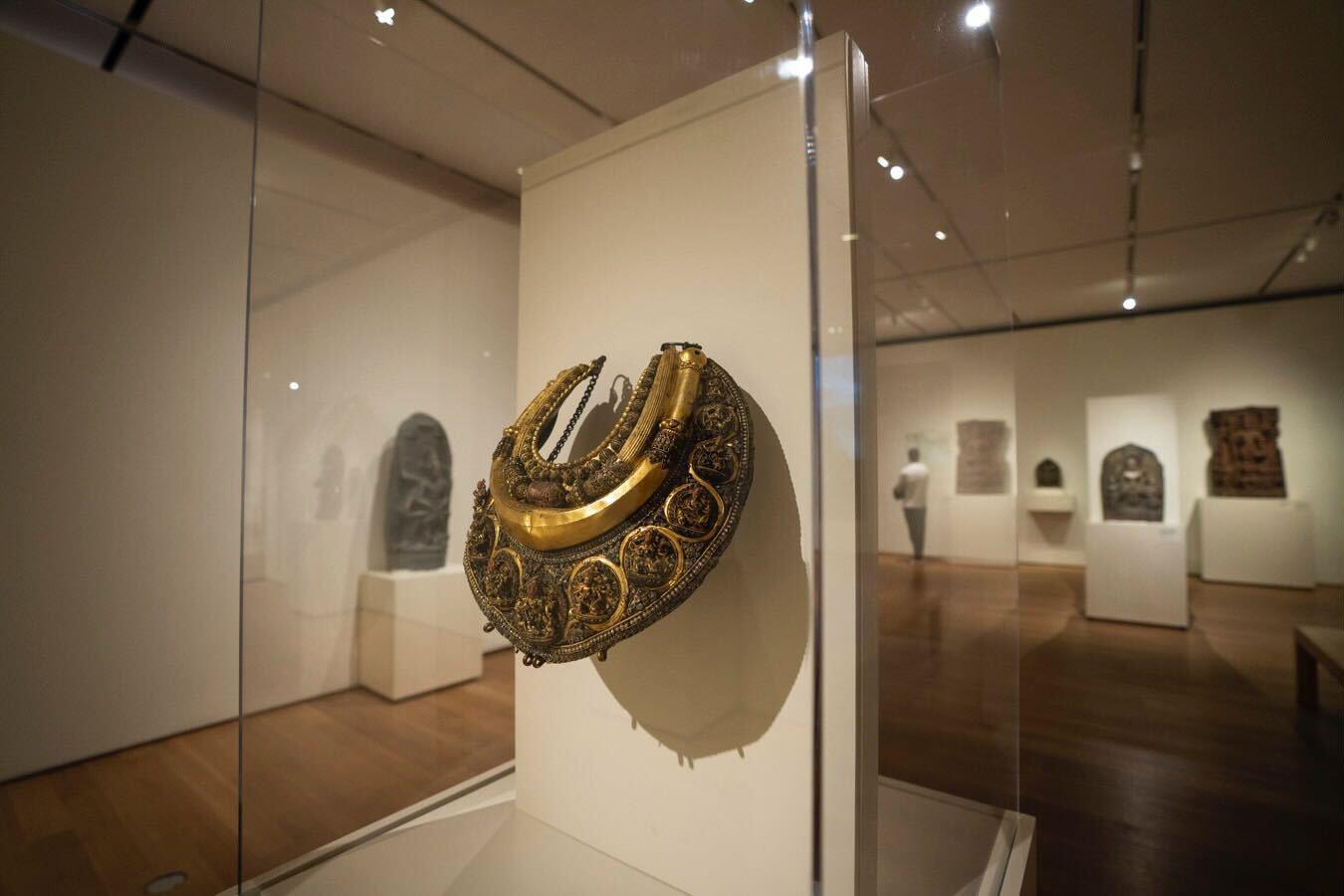
The dispute over the rights to that necklace has dragged on for close to 20 months, raising frustration in Nepal. “I don’t know what else they want,” said Alisha Sijapati, director of the Nepal Heritage Recovery Campaign, which seeks to repatriate stolen objects and has called attention to the case. “The more they delay, it’s damaging to their reputation.”
Crain’s and ProPublica also found that at least nine additional pieces once owned by the Alsdorfs have previously been returned to Nepal and other nations — a pattern that some art historians say should trigger a broader and public examination by the museum of the couple’s collection. The Art Institute was involved in returning two of the pieces: a decorative stone beam from a temple in Thailand, which had been donated to the museum, and a sculpture of the Hindu god Shiva from Nepal, which had been on loan.
The other objects were in the Alsdorfs’ personal collection; one piece was in another museum.
While some museums have taken a more expansive approach to weeding out looted artifacts, the Art Institute lags behind, ProPublica and Crain’s found. Other U.S. museums post information online when they find a problem or repatriate an object; the Art Institute does not. Some museums also maintain an online, public record of repatriations that includes the names of collectors who loaned or donated the contested piece; the Art Institute does not.
A spokesperson for the Art Institute said the museum strives to thoroughly research the objects in its collection and follows industrywide best practices for vetting ownership history or provenance.
The Art Institute takes all repatriation requests “extremely seriously,” the spokesperson, Katie Rahn, said. “Repatriation discussions can be exceptionally complex and can take significant time, but every effort is made to resolve these matters as quickly as possible.”
Concerns about the Alsdorf collection are mounting at a time when museums are drawing scrutiny for their failures to return stolen objects, and even the remains of Native Americans, that are still in their possession.
Art historians and other experts say it’s especially difficult for an underdeveloped country like Nepal to negotiate with a large, world-famous museum like the Art Institute. Nepali officials have lamented that the country’s Department of Archaeology, which handles research into looted objects, is severely understaffed and that coordination between government agencies can be slow.
“Legally, the burden of proof is on the victim,” said Melissa Kerin, an associate professor at Washington and Lee University who specializes in South Asian and Tibetan art and architecture. “They’re the ones already living without the object, but they’re the ones who have to pull together a legal team. We’re talking about a developing country.”
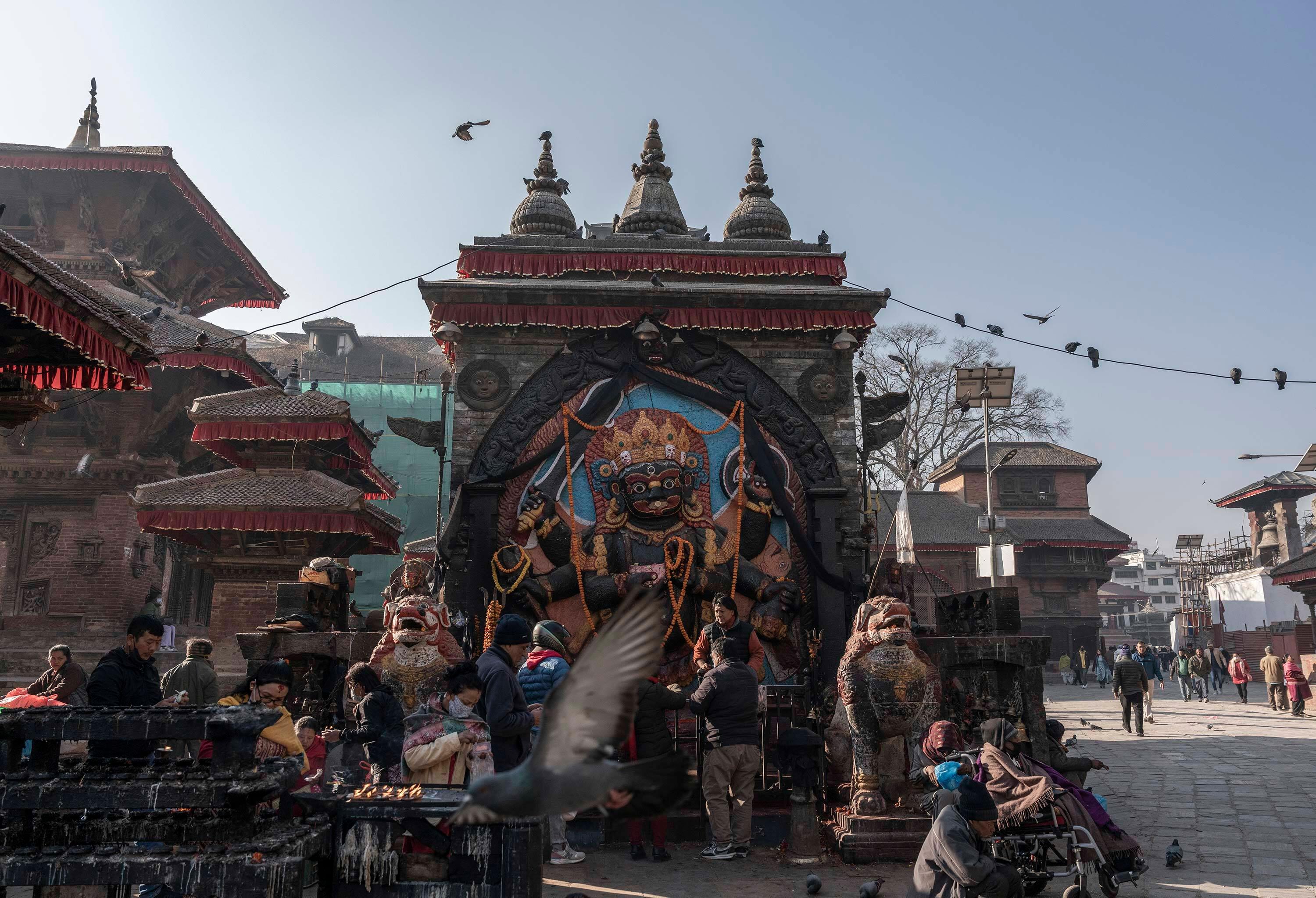
Nepal’s history of political unrest has made it particularly susceptible to looting; hundreds of sculptures, paintings and other spiritual objects have been stolen from the country since 1960, after it began opening its borders to tourism. As in much of South Asia, sculptures depicting deities are considered to be inhabited by those gods and not mere inanimate idols. Their absence leaves worshippers reeling.
Activists with the Nepal Heritage Recovery Campaign said they have found photos showing three objects in their original locations in the country before the Alsdorfs allegedly bought them and gave them to the Art Institute: a wooden sculpture of the goddess Tara, a stone carving of Buddha and another stone sculpture of a Shiva.
Rahn said that the museum is aware of the photos and is investigating the provenance of those objects, but that it has not determined that all of the photos match its pieces. The Nepali government has not initiated repatriation requests on those objects.
According to Rahn, the Art Institute’s last written communication from Nepal about the necklace was in May 2022, and the museum is waiting for additional information. Nepal’s embassy in Washington said the Archaeology Department is “coordinating” with the Art Institute on questions about the necklace, though activists say the museum has asked for records that may not exist or would be difficult to obtain.
The Art Institute would not say if it has conducted a top-to-bottom review of the Alsdorf collection since Marilynn’s death in 2019. The items donated by the Alsdorfs were vetted by the museum when they were acquired under the standards in place at the time, Rahn said, but those internal policies have evolved — and strengthened — since then. “If new information emerges for any object, we conduct further research,” she said.
The Art Institute created three positions “primarily dedicated” to provenance, including a curator who oversees these efforts across the institution, Rahn said. Two of the positions were created in July 2020 and the third in February 2022, she said, as “research became a bigger priority for the museum.”
Rahn said the museum also had formed a task force last year of “senior curatorial and legal leaders” to help prioritize provenance research, but she would not provide additional details. She said the museum is “considering” posting online information about objects that might be returned in the future.
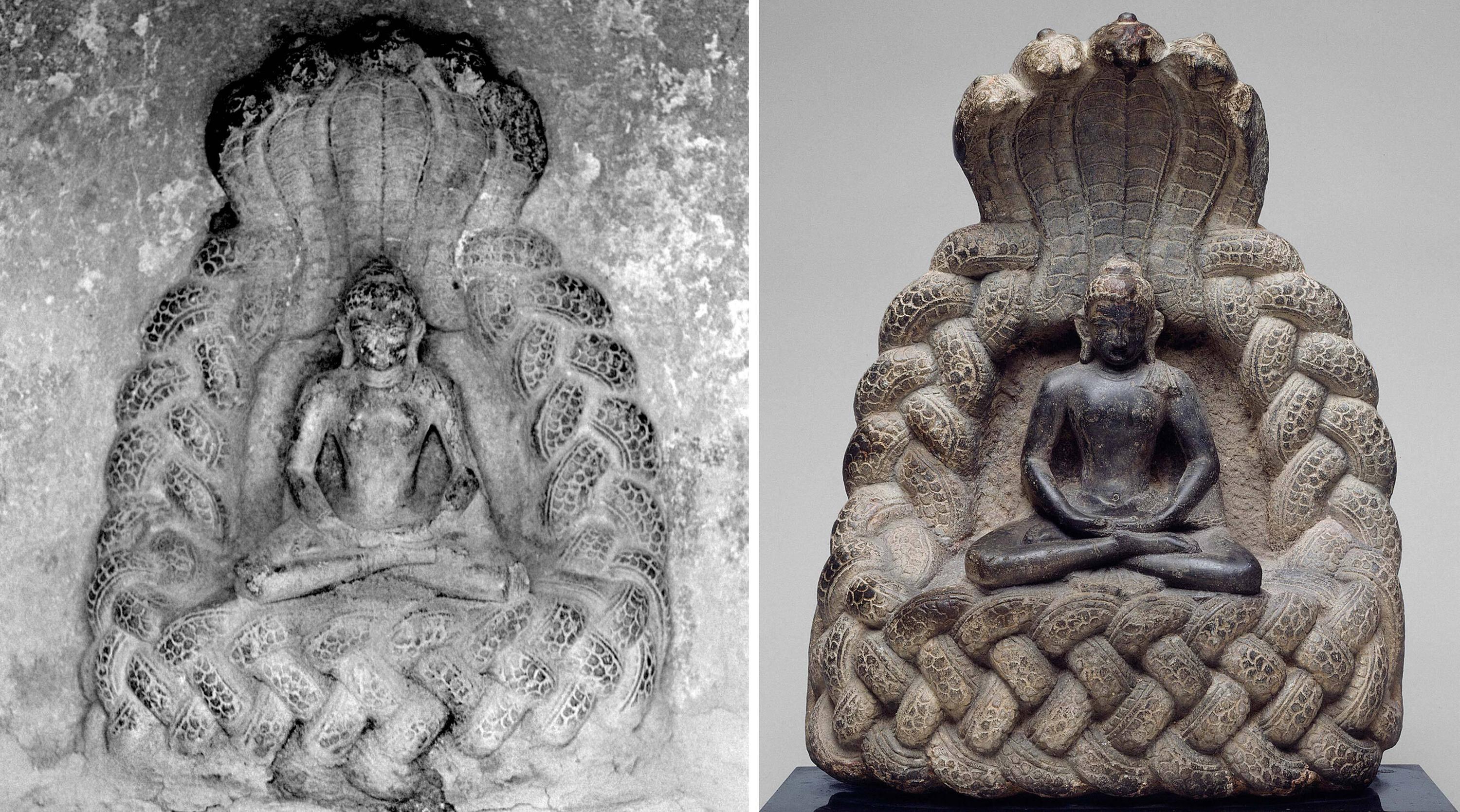
Though the Alsdorfs are both dead, efforts to protect their legacy are ongoing. As part of four recent returns to Nepal, Marilynn Alsdorf’s trust has required the country to agree to not identify the Alsdorfs as the owners in any press releases or other public announcements, according to interviews and records obtained by ProPublica and Crain’s.
Given an opportunity in April 2021 to identify Marilynn Alsdorf as the owner of an object the Art Institute was helping to return to Nepal — the Shiva that had been on loan there — museum officials declined to do so in ArtNews, a major news organization for the arts community.
The Art Institute, however, was not a party to the confidentiality agreement.
“This is all hush hush — very intentionally so,” Kerin said. “It’s protecting the system.”
A Love of Collecting, a Looted Picasso
James and Marilynn Alsdorf supported various museums in their hometown, but perhaps none benefited from a relationship with the couple as much as the Art Institute.
Throughout their lives, the Alsdorfs donated more than $20 million to the Art Institute. James Alsdorf — the son of a Dutch diplomat and a successful owner of a business that produced glass coffee-making equipment — was chair of the museum’s board from 1975 to 1978. Marilynn Alsdorf, who graduated from Northwestern University and worked briefly as a model for commercial and fashion photographers, was a museum trustee and president of its Woman’s Board.
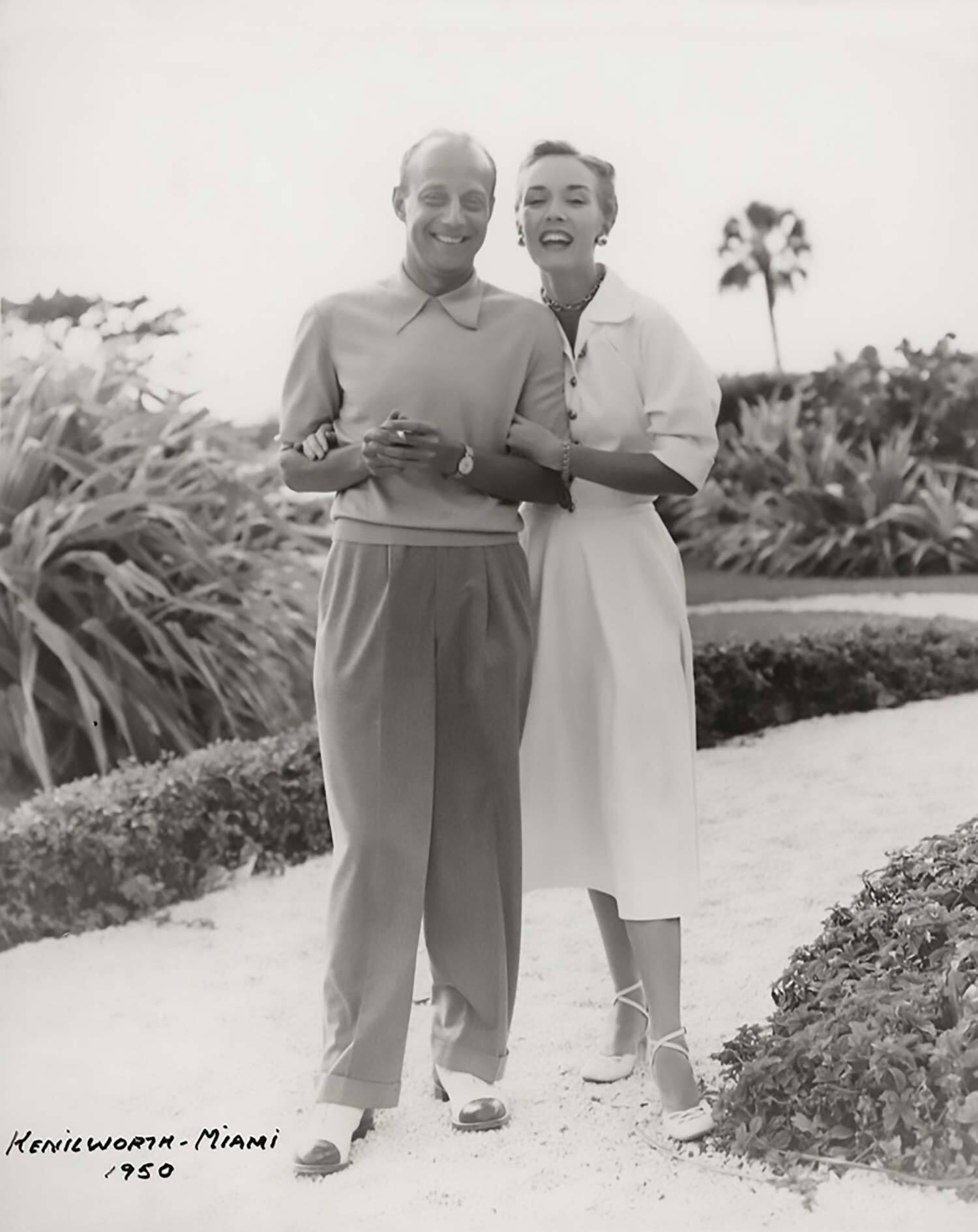
The couple purchased their first South Asian object — a metal sculpture made in Nepal — during a 1955 trip to Paris. In the decades that followed, the Alsdorfs grew their acquisitions and their reputation as leading American collectors. And they became especially well known for their holdings from South and Southeast Asia.
While the Alsdorfs enjoyed the thrill of collecting art together, they also seemed to relish their connection with the elite arts world.
“They liked being part of that community of donors to the city, of having a place of success and status,” said David Tunkl, an art dealer who began working with the Alsdorfs in the 1980s.
Whether the Alsdorfs were aware they were purchasing stolen objects or whether they were taken advantage of by unscrupulous dealers may never be known. They acquired much of their collection during their travels in the 1950s and 1960s, an era that many art historians have described as particularly freewheeling.
During those decades, collectors seldom inquired about a piece’s provenance, perhaps loath to learn an object had been illicitly dug out of the ground or taken from a temple, said Erin Thompson, an associate professor of art crime at John Jay College of Criminal Justice in New York.
“They would’ve seen objects like this being worshipped,” she said. “They should have known.”
The Alsdorfs purchased art all over the world — in India, France and England. They also visited dealers in New York, including Doris Wiener, whose involvement in the illicit trade came to light after the arrest of her daughter Nancy for trafficking in looted objects from Southeast Asia and India. Nancy Wiener pleaded guilty. Attempts to reach Nancy Wiener for comment were not successful; Doris Wiener died in 2011.
Nearly a decade after James Alsdorf’s death in 1990, Marilynn Alsdorf agreed to exhibit her collection at the Art Institute. In a catalog accompanying the 1997 exhibit, Marilynn Alsdorf explained her attraction to art from South and Southeast Asia, saying she and her husband “looked for objects to delight our eyes and souls rather than objects that embodied particular ritual practices or exemplified specific religious texts.”
The contributions Marilynn Alsdorf made to the Art Institute after her husband’s death created the couple’s namesake galleries, a curator’s position at the museum and a professorship at the School of the Art Institute of Chicago. Today, 110 objects from the Alsdorf collection are on display, the majority in the Asian collection.
Questions about the provenance of some objects began when the Alsdorfs were alive. The first widely known case dates to the mid-1970s, when the Thai Embassy alleged a 1,000-year-old stone carving of the god Vishnu was stolen from a temple and asked the Alsdorfs to return it.
James Alsdorf said at the time that he asked the Thais for evidence to corroborate the claim but never received it, so the piece remained at the Art Institute, where it had been displayed for about 10 years, according to news accounts.
In 1988, Thai officials approached the Art Institute, but the museum defended the Alsdorfs and its right to keep the piece, saying it was bought in good faith — legally through a dealer, according to the news accounts.
The controversy dragged on for months and spurred a protest outside the museum.
Eventually, the Art Institute agreed to return the piece in exchange for receiving an object from the Thais from the same period and of “equal artistic merit.”
Years later, Marilynn Alsdorf returned a sculpture of a Shiva cult figure to India after learning, during research for the 1997 exhibition at the Art Institute, that it was likely stolen from a temple decades earlier.
Her attitude was sharply different in the case of a 1922 painting by Picasso, “Femme en Blanc,” or “Lady in White.” In a lawsuit, a California law school student demanded its return, alleging the painting had been owned by his grandmother before it was stolen by the Nazis during World War II from an art dealer storing it for her in Paris.
Though the German and French governments determined that the Nazis had looted the Picasso, Alsdorf insisted that, because she and her husband had bought it from a reputable dealer, it was hers. She acknowledged, however, that they hadn’t made any inquiries into its provenance, according to a sworn deposition from the case.
Alsdorf said she had no intention of returning the Picasso, valued at roughly $10 million. When a lawyer at the deposition asked why, Alsdorf said: “Because I felt I owned the painting. I still feel I own the painting.”
In the end, Alsdorf admitted no wrongdoing but paid the law student $6.5 million and got to keep the painting. The law student, Tom Bennigson, in an interview recalled Alsdorf as “this supercilious rich person who didn’t want to deal with my claim.”
Alsdorf’s son, Jeffrey Alsdorf of Seattle, declined to comment for this story. He is listed as an executor of his mother’s estate and, with other family members, sits on the board of the Alsdorf Foundation, according to the most recently publicly available tax records. Linda Feinstein, a Chicago lawyer who, according to documents, represents Alsdorf’s trust, did not respond to requests seeking comment.
Following Alsdorf’s death at 94, a flurry of repatriations occurred.
The auction house Christie’s returned two Alsdorf-owned objects to Italy that had been put up for auction during a 2020 estate sale, a Christie’s spokesperson said. After the Art Institute assisted with the return of a sixth century Hindu sculpture to Nepal in 2021, Alsdorf’s estate returned three artifacts to the country the following year, also under the condition that she not be publicly identified as the owner.
The agreements required that Nepal refer to the objects only as coming from a “private collection” and prohibited it from naming the Alsdorfs in any press releases or public statements about the repatriations, according to interviews and records obtained by ProPublica and Crain’s.
Most recently, the Yale University Art Gallery in May returned to Nepal a piece it had acquired that was once owned by the Alsdorfs but had been given to the museum by a later owner, according to a curator at the museum.
“Troublingly Close” Relationships
Though collecting ethics have evolved to acknowledge the prevalence of antiquities trafficking, critics say the standards don’t go far enough.
Ethical guidelines created by the Association of Art Museum Directors, a major professional organization, do not apply to objects acquired before 2008, when the standards were created. The guidelines also don’t apply to objects promised by donors before 2008 but officially given much later.
The AAMD guidelines say “member museums normally should not acquire” ancient art or archaeological material if they cannot be sure the items left their country of origin before 1970 or were legally exported after 1970.
That’s the year UNESCO adopted a sweeping treaty to curb antiquities trafficking, prompting many museums to adopt stricter due diligence protocols. The AAMD guidelines suggest that, before museums acquire new objects, they obtain import and export papers, sale records and other provenance documents.
But Patty Gerstenblith, a distinguished research professor specializing in cultural heritage law at DePaul University, said the guidelines contain “exceptions big enough to drive a truck through.”
She points to a provision that allows museums to keep works with incomplete provenances if a donor signed a promise to give the work as a gift or bequest before 2008 — when the AAMD adopted the so-called 1970 rule. But that standard doesn’t apply if an object was on long-term loan before 2008, the donor had signed a promised gift agreement before 2008 or if the institution had an “expectation” prior to 2008 of receiving it.
Since Marilynn Alsdorf promised to donate much of her collection to the Art Institute in the late 1990s and early 2000s, many of the objects likely fall under these exemptions.
The AAMD also requires museums to post information about ancient art or archaeological material if they acquire an object under an exception. But only objects acquired since 2008 and that meet certain definitions for what is an antiquity must be posted — a small percentage of most museum collections.
The Art Institute of Chicago lists 48 objects on the registry; half are Alsdorf donations.
The AAMD says that its registry helps publicize provenance information that would otherwise not come to light. “This makes possible the kind of provenance research — and possibility for restitution, if appropriate — that is not possible when an object is out of view in a private collection,” an organization spokesperson said in an email.
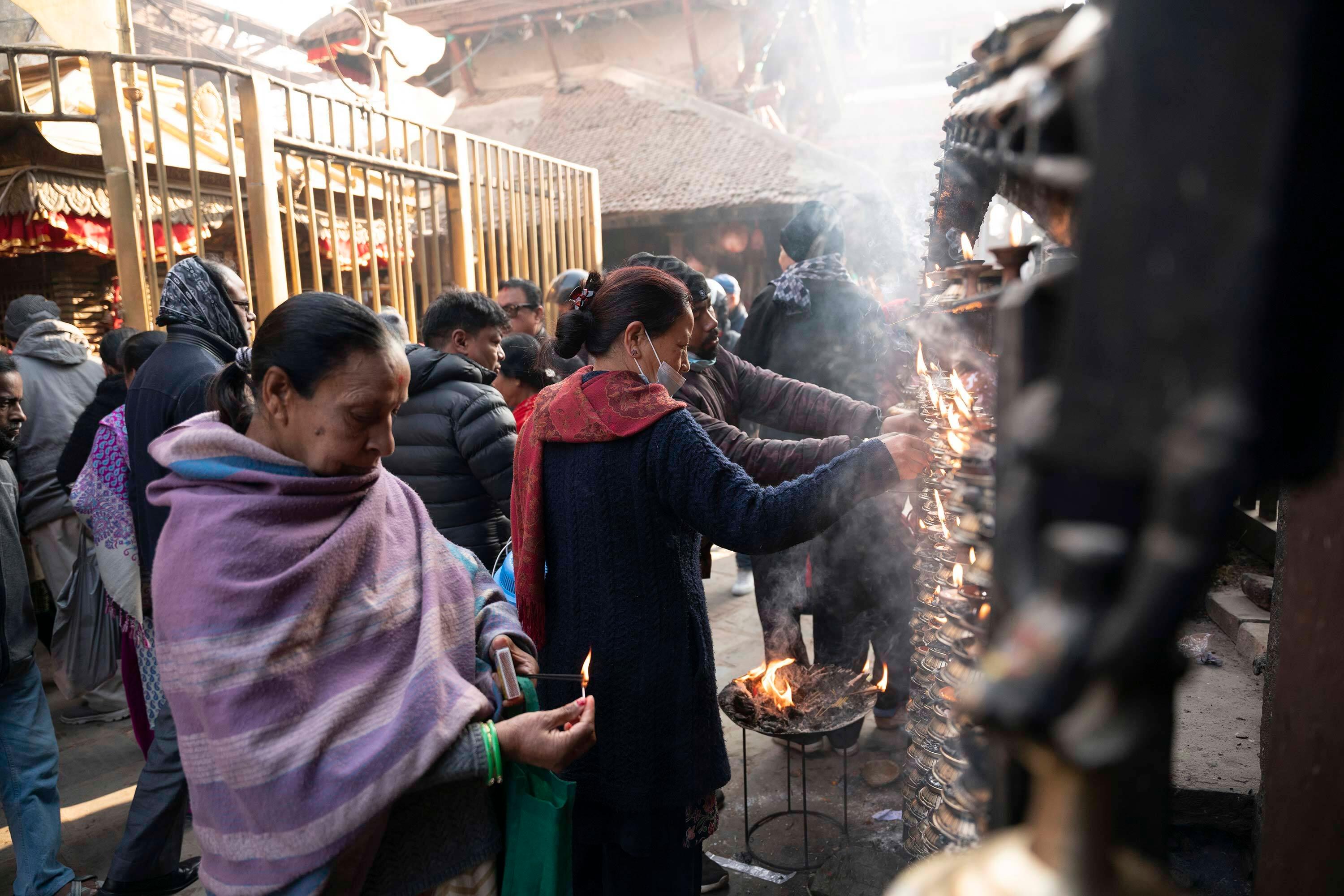
Museums have an incentive not to probe too deeply, according to critics. Conducting rigorous provenance research is time consuming and costly. It also threatens to open the floodgates for repatriation requests and could dissuade potential donors from making contributions.
Robert Linrothe, an associate professor emeritus of art history at Northwestern University who also worked in the education department at the Art Institute in the 1990s, said in an email that the long-term relationship between the museum and donors such as the Alsdorfs has appeared “troublingly close.”
“Many of us have warned of a pattern of turning a blind eye to dishonorable collecting practices that can be traced back to colonial times,” he said. “Western museums are now having to face up to this unfortunate legacy.”
The Art Institute, however, said it has adapted. “There is no question that the generally accepted standards for provenance research have evolved,” Rahn said. “As we engage in the work to learn and publish more about an object’s provenance, it is simply inaccurate to suggest that any current gap in provenance is indicative of illegal or unethical behavior.”
But some museums are more transparent. The Museum of Fine Arts in Boston provides the findings of its provenance research online. Last year, it repatriated 13 objects to four different sources, the museum’s senior curator for provenance, Victoria Reed, has said publicly. The museum also lists previous owners and donors.
The San Antonio Museum of Art, meanwhile, allows website users to search its collection for artwork that was repatriated. The website includes information for 16 objects that were returned to Italy in 2021 and 2022, including the names of the private collectors who had donated the items.
Lynley McAlpine, a curatorial fellow at the museum, said in an email that the museum chose to post the information online “because it is the most efficient way for us to provide transparency.”
The Art Institute, by comparison, doesn’t keep an online record of repatriated objects, and it made no returns in 2022, according to Rahn.
An “Overwhelming” Moment
Sweta Baniya stared in disbelief at the copper necklace at the Art Institute. On that summer day in 2021, Baniya, a Nepali academic living in the U.S., had been excited to explore the vast collection of art from her home country, which she’d learned about from a friend.
When Baniya spotted the necklace — a gift from Marilynn Alsdorf — her emotions shifted.
She dropped to her knees, clasped her hands in prayer and wept. Later, as her mind raced with questions, Baniya shared her experience on social media.
“When I saw the necklace, it was just very overwhelming,” Baniya, an assistant professor at Virginia Tech, said in an interview. “It’s so majestic … but it shouldn’t belong” at the Art Institute.

The necklace, which was said to have been given to the Hindu goddess Taleju by a Nepali king, contained an inscription in Newari, an ancient language of the Kathmandu Valley.
“Victory to the Mother-Goddess,” the inscription says. It also includes the name of King Pratapamalladeva, who ruled the region from 1641 to 1674, and refers to him as “lord of the kings.”
In Nepal, divine representations of Taleju are hidden from public view. Worshippers are permitted inside her temple just one day a year during a religious festival. Even then, they’re not allowed to see her.
Documents obtained by Crain’s and ProPublica show that the Nepali Embassy in Washington first asked for the necklace to be repatriated in August 2021, after Baniya’s posts stirred interest. The embassy sent the Art Institute an archaeological report saying the necklace disappeared from Taleju’s temple in the 1970s and must have been smuggled out of the country.
Nepali officials don’t know precisely when or how the necklace left the country, key facts to help establish its history. According to museum records, the Alsdorfs bought the necklace from a California dealer in June 1976 and loaned it to the museum about two weeks later. Marilynn Alsdorf donated it to the Art Institute in 2010.
Leslie Darling, the Art Institute’s executive vice president and general counsel, told the Nepali Embassy in a September 2021 letter that the museum took the issue “very seriously” and would look into the provenance of the necklace, according to a copy of the letter obtained by ProPublica and Crain’s.
In May of the following year, Darling asked Nepal for additional records on the necklace. Rahn, the Art Institute spokesperson, said the Nepali government hasn’t responded to that letter. A spokesperson for Nepal’s Archaeology Department said officials are still looking for the evidence they were asked to provide but maintain that the inscription on the necklace is “irrefutable” proof that the necklace belongs to Nepal.
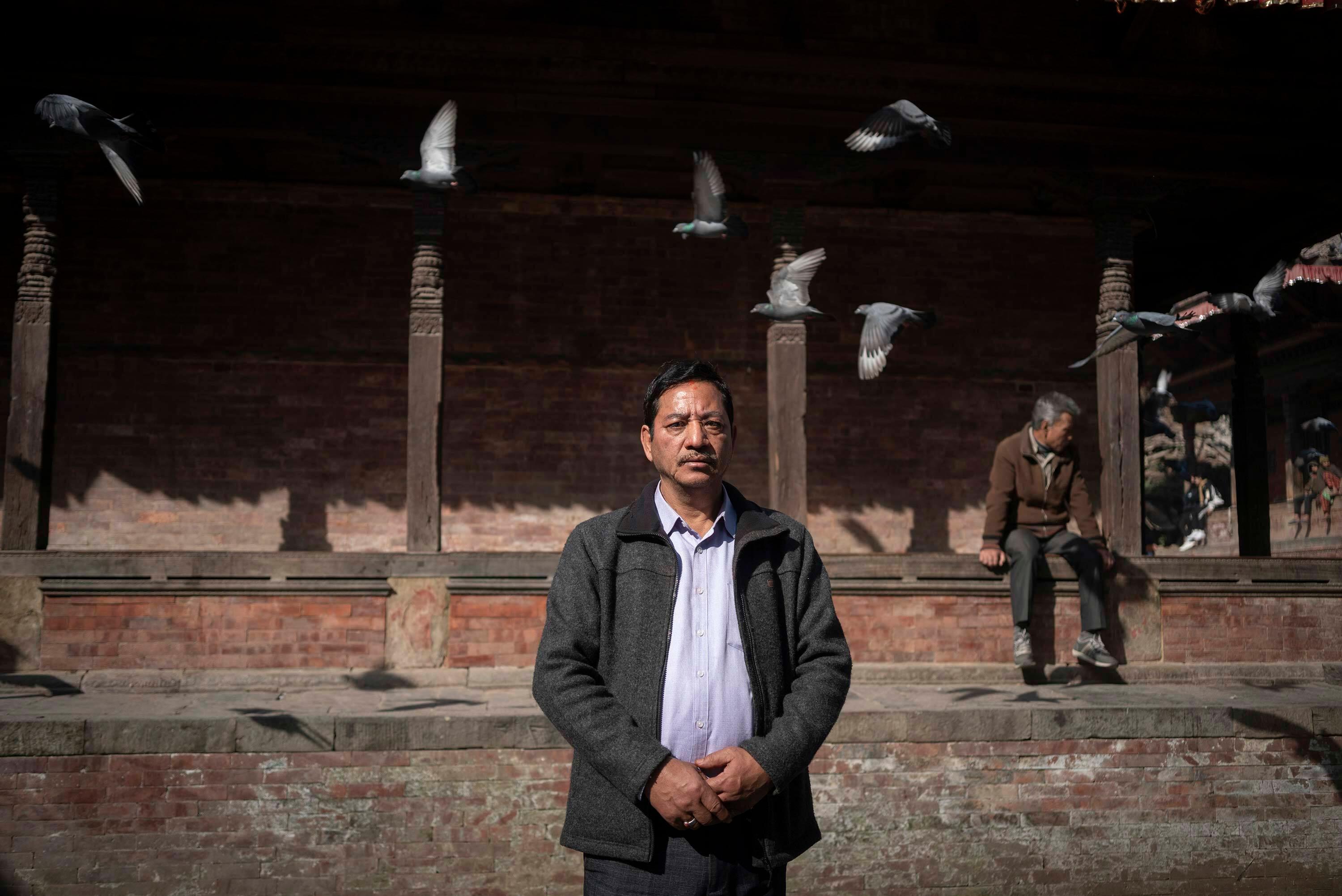
In addition, Uddhav Karmacharya, the high priest of Nepal’s Taleju temple, has found scrolls in the temple basement showing an inventory of gifts given to the goddess, he said. Karmacharya said he notified his government about the scrolls, which mention a large copper necklace with a description matching the one at the Art Institute and provide evidence of the necklace’s origins.
Karmacharya has never seen the necklace in person but said he still feels a strong connection to it.
“This item is not something to be displayed on the wall and to all these onlookers who don’t have the same belief system,” he said in an interview through an interpreter. “A curator might think it’s very beautiful … but this particular item is priceless.”
There are also some tough questions for the Nepalis about how the necklace left their country, including whether the country’s royal family may have helped sell the necklace in the late 1990s to fund its lavish lifestyle. Much of that family died in a massacre in 2001, and the monarchy has been abolished.
The Art Institute seems to have explored the possibility that the royal family played a role as well. In the May letter to the Nepali Embassy, the museum sought information about “the actions of the Zonal Office and other government or religious officials who may have removed and separated jewelry and ornaments.”
Even if Nepali royals were involved, advocates for repatriation say the museum should return the necklace because it is an item of spiritual significance that is collectively owned by the nation.
Since questions about the necklace have become public, so have details about Bruce Miller, the California dealer who sold the Alsdorfs the necklace. Although he was never charged criminally, Miller was described in a 2014 Indian court case as having worked with an alleged antiquities smuggler in India in 1992.
Miller, through his wife, declined an interview, citing health issues. In an email, he said he was “at a complete loss” as to how the Indian case had anything to do with the Alsdorfs and their collection.
Neither Miller nor his wife addressed his involvement in the case. The smuggler was convicted by a jury for the 1992 offenses but a judge overturned his conviction in 2014, saying the prosecution had not met its burden of proof, according to the ruling and a news article.

Roshan Mishra, a founding member of the Nepal Heritage Recovery Campaign, said he understands why repatriations take time. But he said he thinks the Art Institute is stalling, ignoring the strongest proof that comes from the inscription.
“At the end of the day, the necklace belongs to Taleju,” he said. “All of the evidence is there — on the necklace.”

